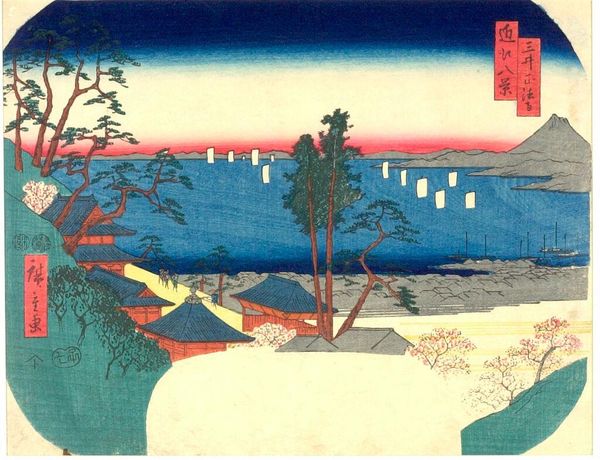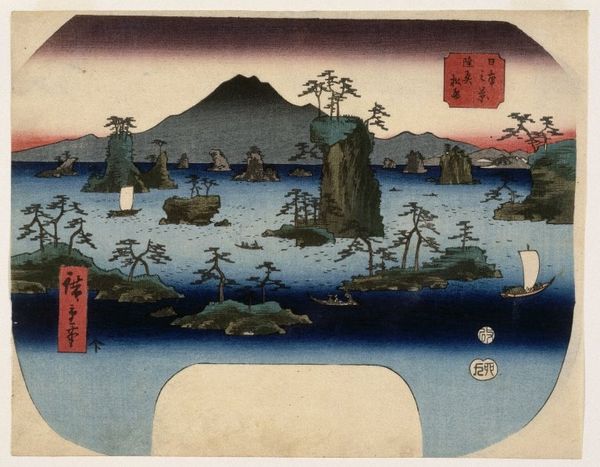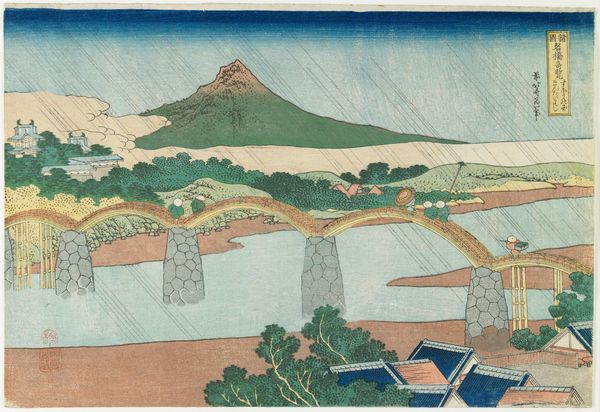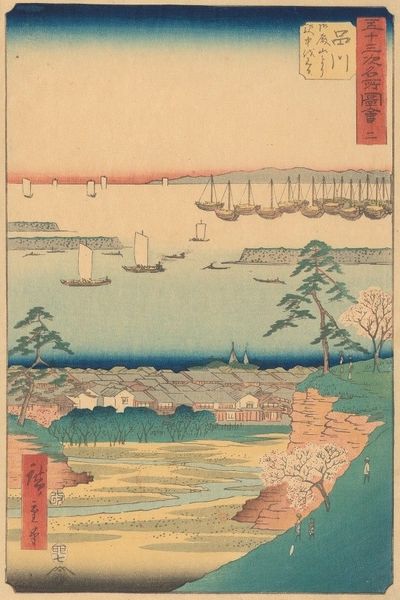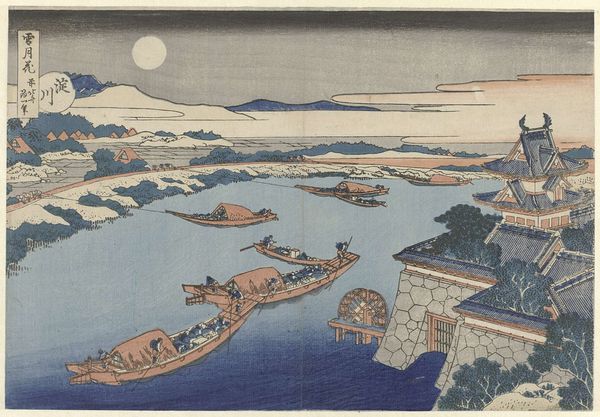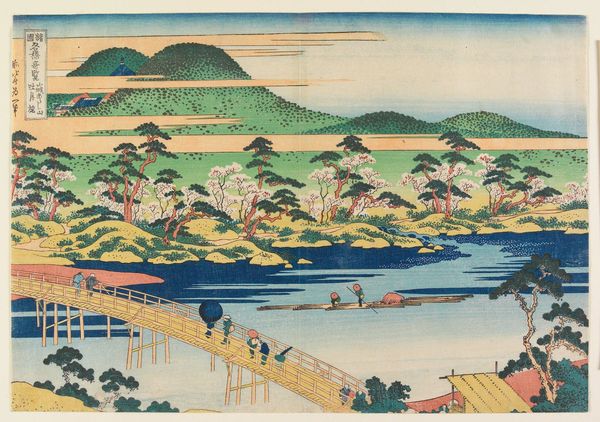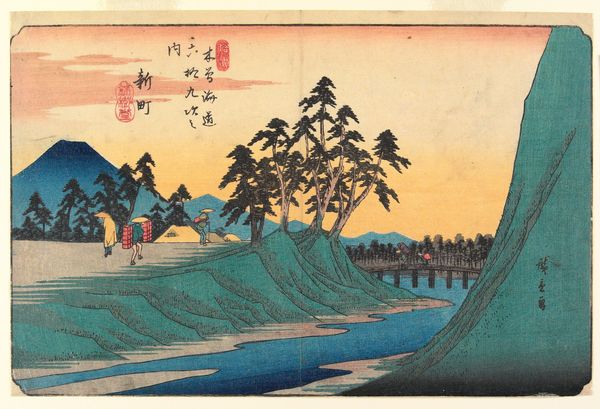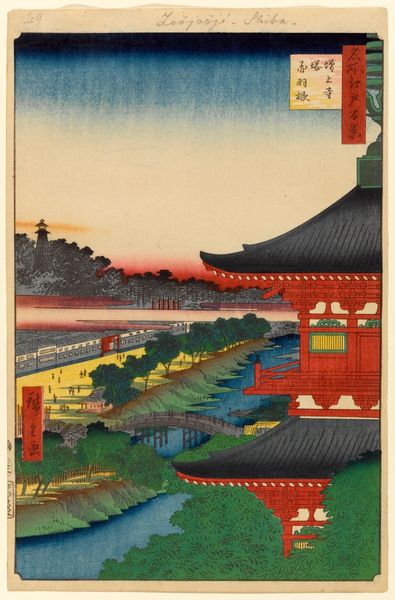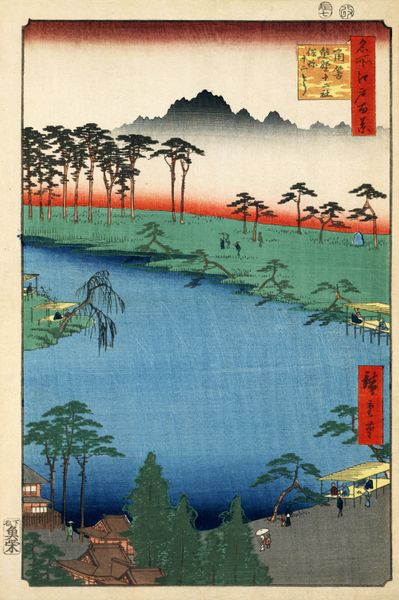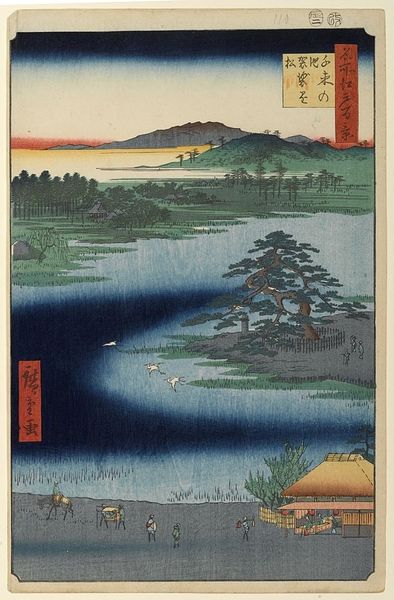
print, textile, woodblock-print
#
boat
#
ship
# print
#
asian-art
#
landscape
#
textile
#
ukiyo-e
#
woodblock-print
#
mountain
Copyright: Public domain
Curator: Let's take a closer look at "Ama No Hashidate in Tango Province," a woodblock print crafted by Utagawa Hiroshige in 1858, a leading figure in the Ukiyo-e movement. Editor: The colour strikes me. That intense blue. It feels quite modern somehow, juxtaposed with those stark white lanterns. What’s your immediate sense of the materiality here? Curator: Woodblock printing involved a complex division of labor, from the artist's initial design to the carving of the blocks, printing, and publication. These prints were surprisingly affordable and widely distributed. Editor: Right, they democratized art in a way. Consider the painstaking process involved in translating the landscape to these specific pigments, layering each color by hand. It is an industrial craft more than a painting, really. The labour behind it adds another layer to appreciating it, wouldn't you say? Curator: Absolutely. Hiroshige masterfully captures the scene’s serene beauty while subtly acknowledging the commercial aspects. "Ama No Hashidate" was a famous scenic spot, a key component of how tourism shaped local economies. The composition, formatted as a fan, makes it more consumable. Editor: And that formatting hints at its own kind of manufactured use—as an ephemeral commodity, a souvenir. Were textile patterns like these? Were these works reproduced to be consumed, to be discarded after a moment of enjoyment? Curator: Very much so. Hiroshige’s work both documented and participated in a burgeoning culture of travel and leisure that was very influenced by socioeconomic realities of 19th century Japan. It elevated views from the real-world that become embedded in art and culture and tourism, while remaining quite affordable. Editor: Considering the labor and the original mass-produced intent shifts our understanding of what "landscape" meant in these prints, perhaps less nature-centric than reflecting a moment of crafted aesthetic engagement with commodity and place. Curator: Precisely, seeing it through a wide lens provides invaluable insights into the period's culture, and its complex commercial art ecosystems, really changes how we value such works today. Editor: Yes, analyzing the artist's labour illuminates so much more than his technique; this brings the landscape to our contemporary view on culture.
Comments
No comments
Be the first to comment and join the conversation on the ultimate creative platform.
